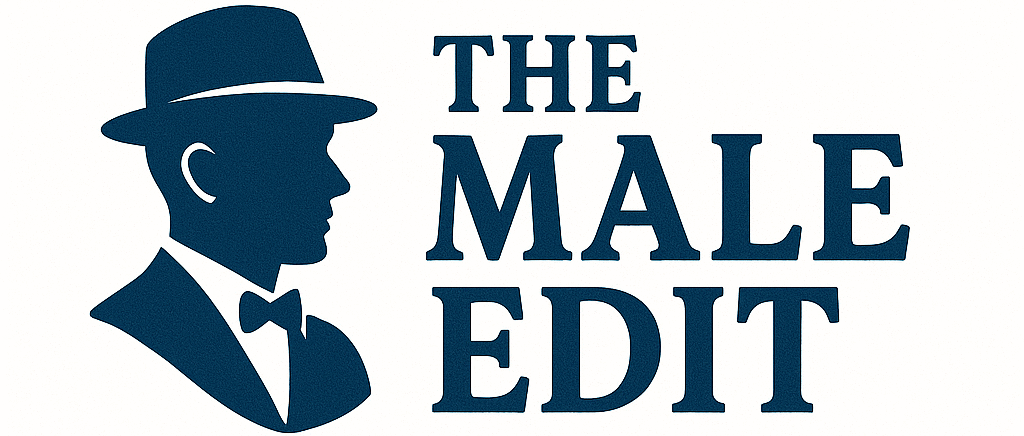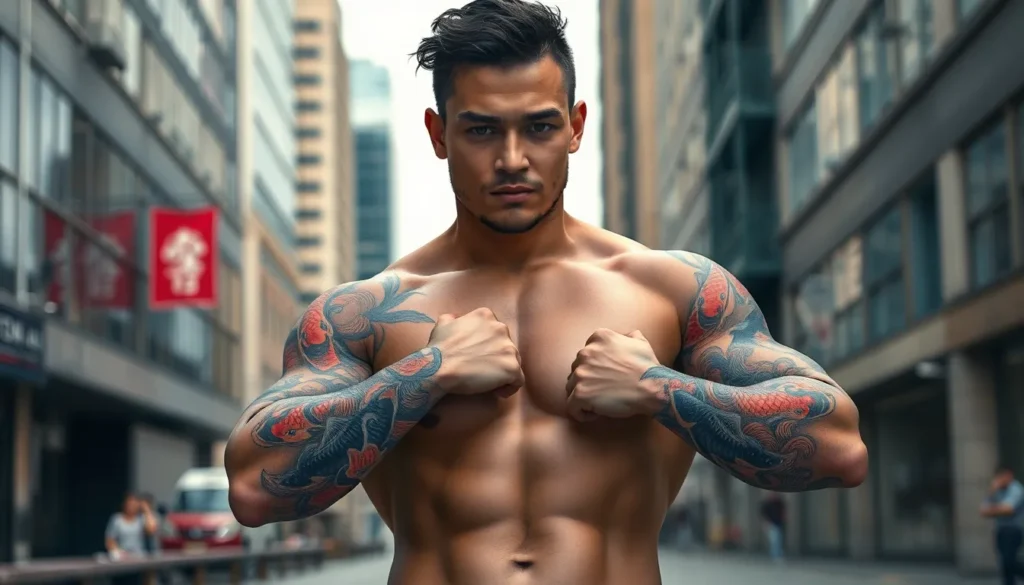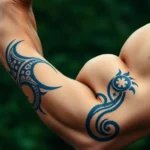Japanese forearm tattoos have become increasingly popular among men who want to showcase their appreciation for traditional Japanese artistry while making a bold statement. These striking designs combine centuries-old cultural symbolism with modern tattoo techniques, creating powerful visual narratives that wrap beautifully around the forearm’s natural contours.
We’ve seen a surge in demand for authentic Japanese tattoo styles like irezumi, which feature iconic elements such as koi fish, dragons, cherry blossoms, and samurai warriors. The forearm provides the perfect canvas for these detailed designs, offering enough space to capture intricate details while remaining visible enough to display your artistic investment.
Whether you’re drawn to the spiritual significance of traditional motifs or simply captivated by the bold aesthetic, Japanese forearm tattoos offer men a unique way to express their personality and style. From minimalist single elements to elaborate sleeve extensions, these tattoos represent a commitment to both artistry and cultural appreciation that’ll last a lifetime.
Traditional Japanese Forearm Tattoo Designs That Command Respect
These iconic designs have earned their place in tattoo culture through centuries of artistic tradition and deep cultural significance.
Dragon Motifs and Their Symbolic Power
Dragons in Japanese tattoo art represent wisdom, strength, and protection from evil forces. We see these magnificent creatures depicted in various forms across forearm designs, from the serpentine ryu dragons to the more fierce interpretations found in traditional irezumi work. Most dragon forearm tattoos feature scales rendered in black and gray or vibrant colors like emerald green and deep blue.
Eastern dragons differ significantly from their Western counterparts, appearing as benevolent beings rather than destructive monsters. These designs typically showcase dragons coiling around the forearm with flowing manes and whiskers that create ever-changing movement in the artwork. Professional tattoo artists often incorporate clouds, waves, or cherry blossoms around dragon motifs to enhance the overall composition and cultural authenticity.
Koi Fish Swimming Upstream Against Adversity
Koi fish tattoos symbolize perseverance, courage, and the ability to overcome life’s obstacles through determination. We often see these designs featuring multiple koi swimming in opposite directions, representing the balance between struggle and success. Traditional color schemes include orange, red, black, and white koi, each carrying exact meanings within Japanese culture.
Swimming upstream koi particularly resonate with men who’ve faced important challenges in their lives. These tattoos frequently incorporate water elements like waves, ripples, and lotus flowers to create a complete aquatic scene on the forearm. Master tattoo artists use shading techniques that make the koi appear to move beneath the skin, creating an almost three dimensional effect that captivates viewers.
Samurai Warriors and Honor-Bound Imagery
Samurai forearm tattoos embody the bushido code of honor, loyalty, and disciplined warrior spirit. We find these designs featuring armored warriors in various poses, from meditation to battle stances, each telling a story of dedication and moral strength. Traditional samurai tattoos often include katana swords, cherry blossoms, and kanji characters that reinforce the warrior’s code.
Modern interpretations of samurai imagery blend realistic portraiture with traditional Japanese art styles. These designs frequently showcase detailed armor plating, flowing robes, and facial expressions that convey both strength and wisdom. Artists commonly incorporate background elements like Mount Fuji, temple structures, or bamboo forests to create a complete narrative scene that wraps around the forearm naturally.
Modern Japanese Forearm Tattoo Styles for Contemporary Men
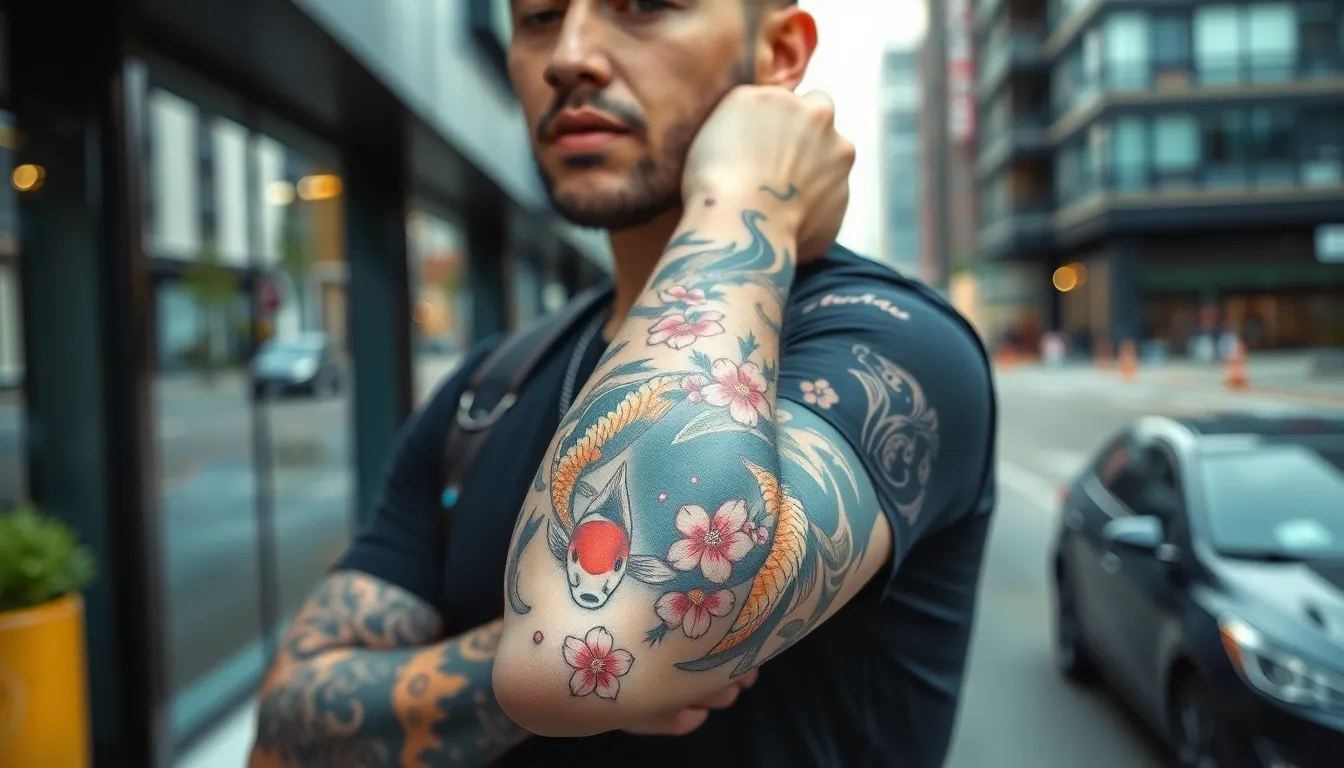
Contemporary artists continue to push creative boundaries while honoring traditional Japanese tattoo heritage. These modern interpretations offer fresh perspectives on classic motifs that resonate with today’s tattoo enthusiasts.
Neo-Traditional Japanese Art with Bold Colors
Neo-traditional Japanese forearm tattoos revitalize classic motifs through dramatic color palettes and enhanced visual impact. Artists incorporate traditional elements like koi fish, dragons, samurai, and cherry blossoms while amplifying their presence with bold, vivid colors that command attention. The forearm’s natural elongated canvas allows these designs to flow dynamically with the arm’s shape, creating movement that brings mythical creatures and symbolic imagery to life.
Deep blacks form the foundation of these pieces, enhanced by bright reds, blues, and yellows that create striking contrasts. This approach transforms familiar Japanese symbols into contemporary masterpieces that honor tradition while embracing modern tattoo artistry. The result delivers maximum visual impact without sacrificing the cultural significance that makes Japanese tattoos so meaningful.
Minimalist Japanese Symbol Tattoos
Minimalist Japanese forearm tattoos appeal to men who prefer refined subtlety over bold statements. These designs focus on meaningful icons such as sakura petals, stylized waves, or carefully selected kanji characters that carry personal significance. Clean, sparse lines define these tattoos, with minimal shading that creates elegant simplicity rather than complex imagery.
The forearm provides an ideal placement for these discrete designs, allowing for visibility while maintaining professional appropriateness. Single kanji characters often represent concepts like strength, honor, or peace, while small sakura clusters might symbolize life’s fleeting beauty. This approach offers a sophisticated nod to Japanese culture that speaks volumes through restraint rather than elaborate detail.
Geometric Japanese Pattern Combinations
Contemporary Japanese tattoo art increasingly intersects with modern geometric aesthetics, creating unique fusion designs that blend ancient symbolism with abstract patterns. Traditional motifs like seigaiha (wave patterns) or asanoha (hemp leaf designs) combine seamlessly with iconic imagery such as koi fish or samurai helmets. These hybrid designs create visual tension between organic traditional forms and precise geometric structures.
The linear nature of forearm placement perfectly accommodates these pattern combinations, allowing geometric elements to frame or enhance traditional Japanese symbols. Artists might incorporate hexagonal patterns around cherry blossoms or use triangular compositions to highlight dragon scales. This modern approach appeals to men seeking tattoos that honor Japanese heritage while expressing contemporary artistic sensibilities.
Essential Elements That Define Authentic Japanese Forearm Tattoos
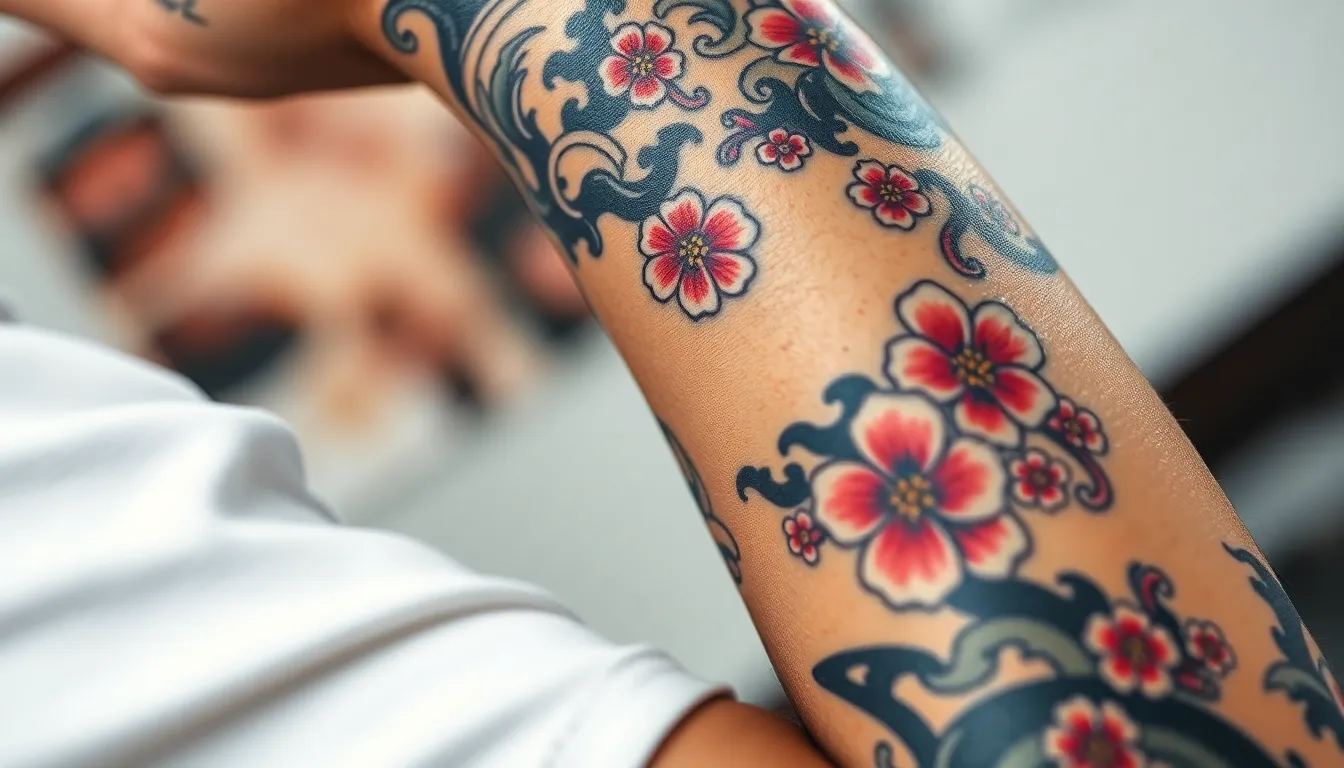
Authentic Japanese forearm tattoos are distinguished by exact artistic elements that have remained consistent across centuries of traditional tattooing. These foundational components work together to create the distinctive aesthetic that separates genuine Japanese designs from westernized interpretations.
Wind and Water Background Patterns
Wind and water motifs serve as essential background elements that add ever-changing motion and depth to Japanese forearm tattoos. These natural forces create flowing, harmonious backdrops that enhance the main imagery while symbolizing life’s constant movement and change. Artists depict wind through swirling clouds and powerful gusts that seem to move across the skin, while water appears as cascading waves, flowing streams, or dramatic splashes that complement the primary design elements.
Ever-changing movement characterizes these background patterns, creating visual flow that follows the natural contours of the forearm. Water elements often incorporate traditional wave patterns known as seigaiha, which feature overlapping semicircles that represent tranquility and strength. Wind patterns typically include billowing clouds called kumo, which add volume and create atmospheric depth around dragons, koi fish, or samurai figures.
Cherry Blossom and Seasonal Flower Accents
Cherry blossoms represent the transient nature of life and beauty in Japanese tattoo tradition, making them powerful accent elements for forearm designs. These delicate sakura flowers bloom briefly each spring, symbolizing life’s ephemeral moments and the importance of appreciating beauty while it lasts. Artists strategically place cherry blossoms throughout the composition to create balance and add soft, organic shapes that contrast with more aggressive imagery like dragons or samurai warriors.
Seasonal flowers extend beyond cherry blossoms to include chrysanthemums, peonies, and lotus blooms that each carry exact meanings. Chrysanthemums symbolize longevity and rejuvenation, while peonies represent honor, wealth, and masculine strength. Lotus flowers embody purity and spiritual awakening, often appearing in water scenes with koi fish or dragons.
Placement of these floral accents follows traditional Japanese aesthetic principles, creating asymmetrical balance and natural flow throughout the forearm tattoo. Artists use these elements to soften harsh lines and provide visual rest areas within complex compositions.
Traditional Japanese Color Palettes
Bold black outlines combined with natural and vivid colors define the authentic Japanese tattoo color scheme. Red, blue, green, and yellow create the foundation of traditional irezumi palettes, with each color carrying cultural significance and symbolic meaning. Black serves as the primary outline color, providing structure and definition that allows other colors to pop against the skin.
Red represents life force, passion, and protection in Japanese culture, often appearing in dragon scales, cherry blossoms, and flames. Blue symbolizes calm, stability, and depth, commonly used in water elements and sky backgrounds. Green connects to nature, growth, and harmony, frequently seen in foliage and certain dragon colorations. Yellow signifies prosperity, courage, and imperial power, appearing in accents and highlights throughout the design.
Some contemporary interpretations use black and grey shading exclusively, emphasizing depth, texture, and traditional aesthetics while maintaining cultural authenticity. This monochromatic approach works particularly well for samurai portraits and detailed dragon scales, creating dramatic contrast and highlighting intricate linework.
Color saturation in authentic Japanese tattoos remains bold and vibrant, avoiding the muted tones often seen in other tattoo styles. Artists layer colors to create depth and dimension, using traditional techniques that ensure the tattoo maintains its visual impact over time.
Popular Placement Options for Japanese Forearm Tattoos on Men
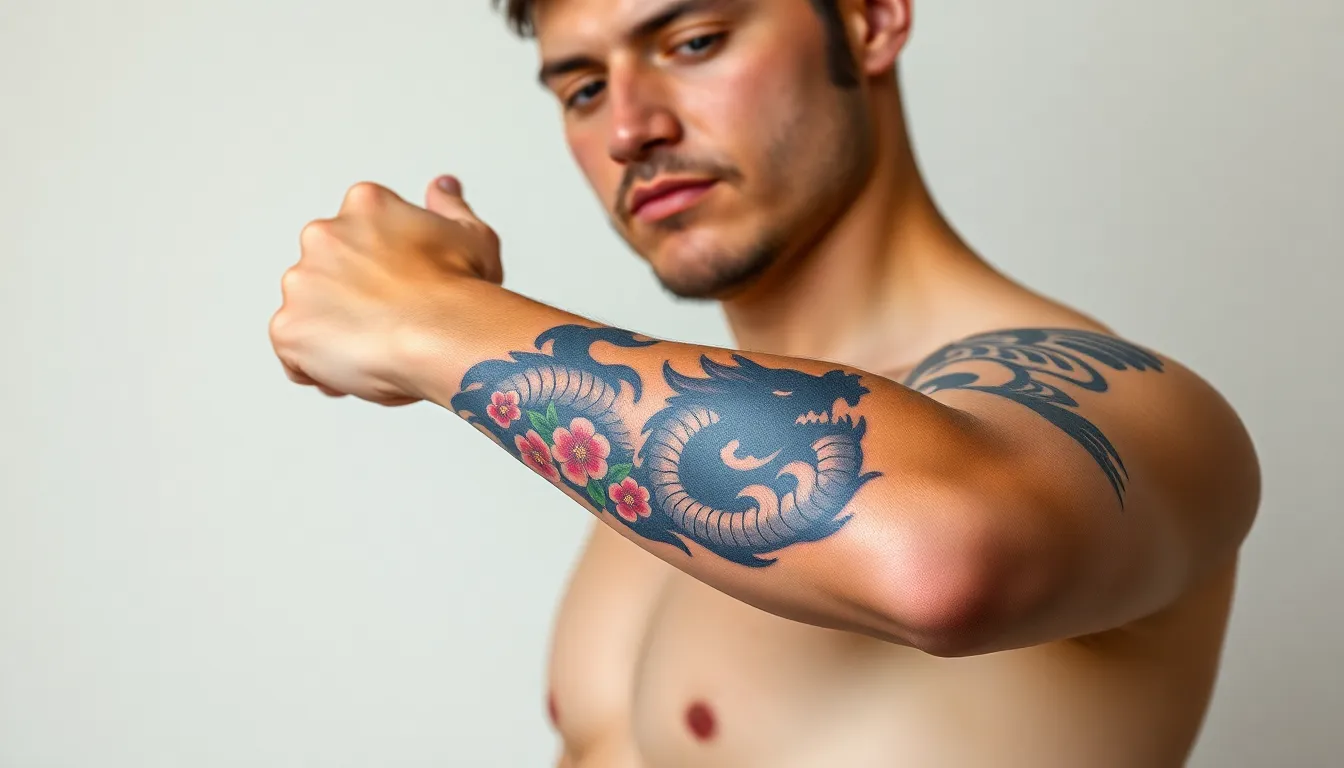
Choosing the right placement transforms your Japanese forearm tattoo from artwork into a powerful statement. We’ll explore three primary placement strategies that maximize both visual impact and cultural authenticity.
Full Forearm Sleeve Coverage
Full forearm sleeves offer the most comprehensive canvas for Japanese tattoo storytelling. These designs allow artists to incorporate multiple traditional elements like samurai warriors surrounded by cherry blossoms and waves, creating continuous narratives that wrap around your entire arm. Dragons intertwined with clouds become particularly striking in this format, as the detailed black and grey shading or vibrant colors enhance the depth and cultural symbolism throughout the complete sleeve.
Elaborate compositions flourish in full sleeve placements because they provide sufficient space for complex backgrounds and interconnected motifs. We recommend this placement for men seeking maximum visual impact and the ability to showcase multiple Japanese cultural elements in one cohesive design. The wraparound nature creates ever-changing viewing angles that reveal different aspects of your story as the arm moves.
Inner Forearm Vertical Designs
Inner forearm vertical placements make excellent use of your arm’s natural length and shape. Japanese kanji characters, samurai swords, and cascading waves work exceptionally well in this orientation, following the arm’s vertical flow seamlessly. These placements offer more discretion and personal connection, making them ideal for showcasing symbols of inner strength or personal philosophy.
Vertical koi fish swimming upstream create particularly elegant compositions on the inner forearm, as their natural movement complements the arm’s elongated shape. Bamboo stalks also work beautifully in this placement, their straight lines and organic curves adding sophisticated flow to your tattoo. The inner forearm’s proximity to your body makes these designs feel more intimate and personally meaningful.
Outer Forearm Horizontal Layouts
Outer forearm horizontal layouts accommodate wider compositions that demand bold visual presence. Panoramic scenes featuring Japanese temples, Mount Fuji, or dragons in motion work exceptionally well in this orientation, providing space for detailed backgrounds and horizontal storytelling. These placements create striking visual effects that catch attention and showcase the full scope of Japanese artistic traditions.
Horizontal designs blend traditional patterns with natural elements like cherry blossoms or clouds more effectively than other placements. The outer forearm’s visibility makes it perfect for designs that you want to share with the industry, while the horizontal format allows for balanced compositions that flow naturally with your arm’s movement. Dragons moving across the outer forearm create particularly ever-changing effects that seem to come alive with arm motion.
Cultural Significance Behind Japanese Tattoo Symbols for Men
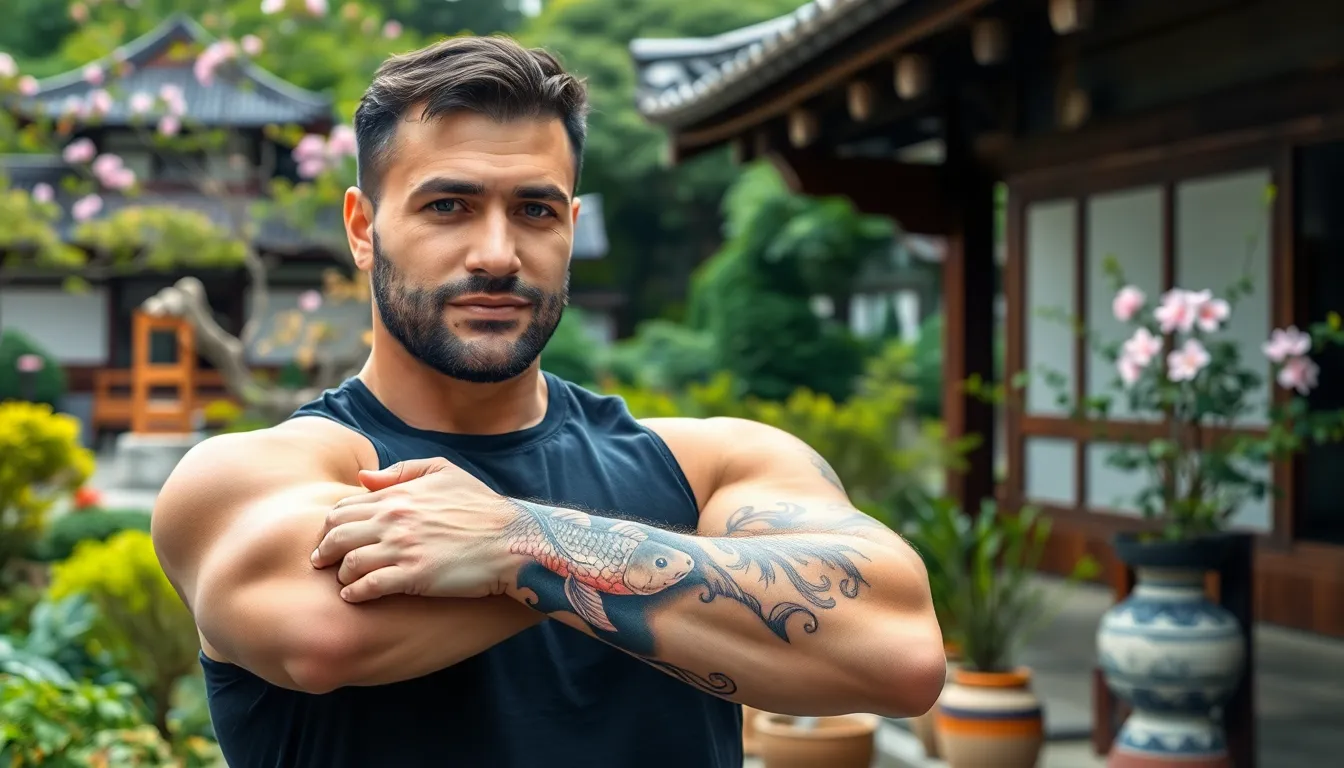
Japanese tattoo symbols carry profound cultural weight that extends far beyond mere decoration. These ancient designs, known as irezumi or horimono, originated centuries ago and have evolved from markers of punishment into sophisticated artistic expressions of identity, protection, and personal meaning.
Spiritual Protection and Good Fortune Meanings
Traditional Japanese tattoo motifs serve as powerful talismans designed to ward off evil spirits and attract positive energy into our lives. The Daruma figure stands as one of the most potent protective symbols, embodying six key blessings: good luck (Kaiun), prosperity (Hanei), business success (Shouun), perseverance (Nintai), courage (Yuuki), and family safety (Kanai Anzen). Daruma’s fierce expression reminds us of our inner strength and unwavering determination to overcome obstacles.
Demon tattoos like Raijin, the thunder god, offer another layer of spiritual protection by shielding wearers from negative forces and harmful influences. These supernatural beings transform negative energy into protective power, creating a spiritual barrier around those who wear them. Buddhist and Shinto influences permeate these designs, connecting wearers to ancient spiritual traditions that emphasize harmony between the physical and metaphysical worlds.
Strength and Courage Representations
Koi fish tattoos embody the ultimate symbol of perseverance and strength in Japanese culture, representing the legendary journey of koi swimming upstream to transform into mighty dragons. This transformation myth teaches us that determination and persistence can help us overcome any challenge, no matter how insurmountable it may seem. Water elements surrounding the koi enhance this narrative by showing the turbulent currents we must navigate in our own lives.
Dragons themselves represent wisdom, power, and bravery, making them ideal choices for men seeking to display their inner strength through visible forearm art. These mythical creatures encourage resilience and valor while reminding us that true power comes from within. Samurai imagery adds another dimension to strength symbolism, representing the bushido code of honor, loyalty, and moral courage that guides us through difficult decisions.
Life Journey and Personal Growth Themes
Cherry blossom tattoos capture the essence of life’s fleeting beauty, emphasizing how precious moments pass quickly and should be treasured deeply. These delicate flowers teach us to appreciate each stage of our personal journey while accepting that change is the only constant in life. Seasonal flower motifs create a visual timeline of growth, showing how we evolve through different phases of our existence.
Firefighters and couriers historically used these tattoos as symbols of their professional identity and spiritual protection during dangerous work. Their choice to wear these designs reflects a deep understanding of how art can provide strength during challenging times. Modern men continue this tradition by selecting symbols that represent their own life experiences, career milestones, and personal transformations, creating a visual narrative of their unique path through life.
Choosing the Right Japanese Tattoo Artist for Your Forearm Design
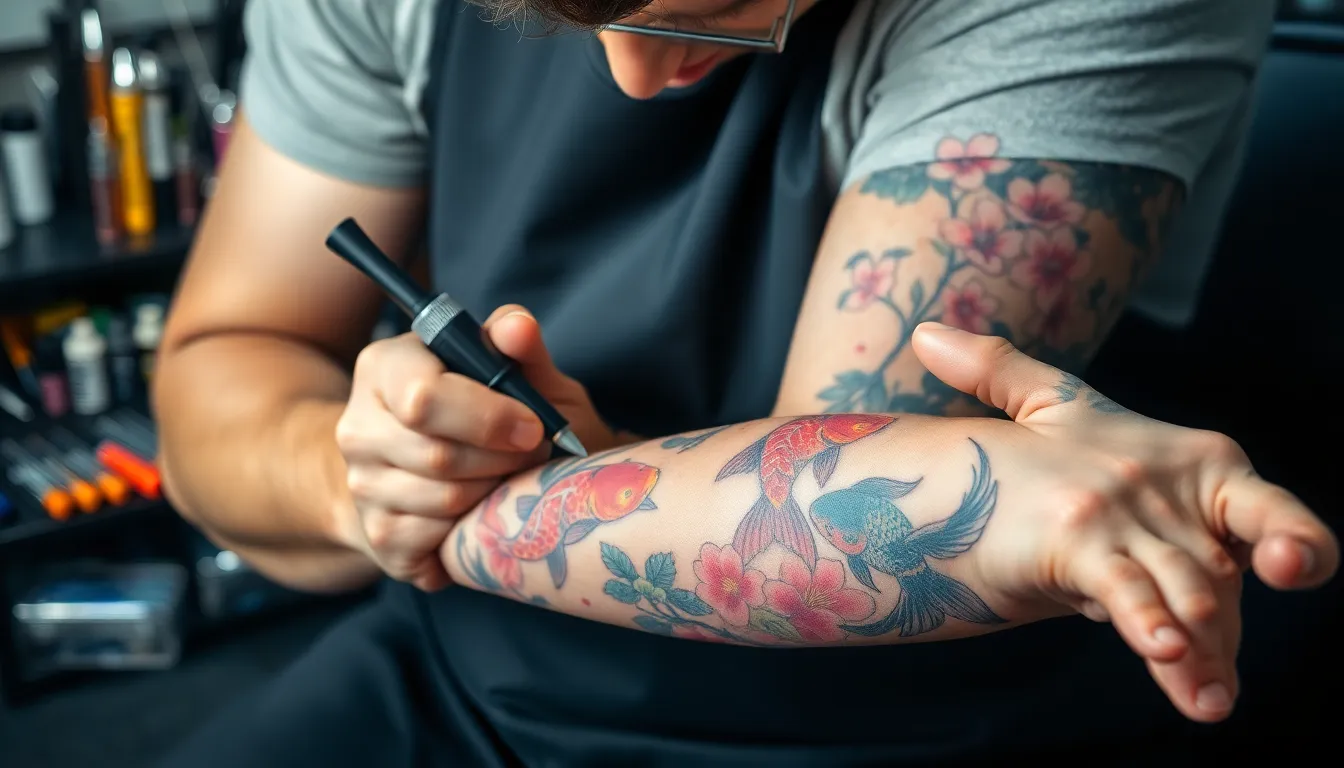
Finding the perfect artist transforms your Japanese forearm tattoo vision into an authentic masterpiece that honors cultural traditions while showcasing exceptional craftsmanship.
Researching Artists with Japanese Tattoo Expertise
Specialized tattoo artists with deep Irezumi knowledge create the most authentic Japanese forearm designs. Search platforms like Pinterest and Inkbox to discover artists whose portfolios consistently feature traditional motifs including koi fish, dragons, samurai warriors, and cherry blossoms. Studios that focus exclusively on Japanese tattooing often employ artists who’ve studied the historical significance and symbolic meanings behind each design element.
Artists with Japanese expertise understand the cultural weight behind traditional symbols rather than simply copying aesthetic elements. Review their social media presence and client testimonials to gauge their commitment to authentic Japanese tattoo artistry. Many respected artists have trained directly with Japanese masters or spent years studying traditional techniques and cultural contexts.
Portfolio Assessment and Style Matching
Bold outlines and vibrant color harmonies distinguish authentic Japanese tattoo work from generic interpretations. Examine portfolios for evidence of skilled line work, detailed shading techniques, and compositions that flow naturally with forearm muscle structure. Artists who excel at Japanese designs demonstrate mastery of color layering that creates depth while maintaining the symbolic integrity of traditional motifs.
Strong portfolios showcase tattoos that convey rich symbolism through visual storytelling rather than decorative surface patterns. Look for examples where artists successfully balanced multiple design elements like honor, strength, and beauty within cohesive forearm compositions. Artists’ previous work should reveal their ability to adapt traditional designs to individual clients while preserving cultural authenticity.
Understanding Traditional Tattooing Techniques
Traditional Japanese tattooing combines modern machine work with classical hand poking methods called tebori to achieve distinctive texture and depth. Tebori tattoos performed by skilled masters create unique ink saturation and healing characteristics that differ significantly from standard machine techniques. Discuss technique preferences with potential artists to understand how their chosen methods affect healing time, longevity, and overall visual impact.
Authentic Japanese forearm tattoos require careful layering and strategic shading to generate movement and dimensional depth across the arm’s surface. Artists who master traditional techniques incorporate wind and water background patterns that add motion while respecting the cultural significance of each design element. Understanding these technical distinctions helps you select an artist capable of creating a forearm tattoo that honors Japanese traditions through both artistic skill and cultural knowledge.
Aftercare Tips for Japanese Forearm Tattoos on Men
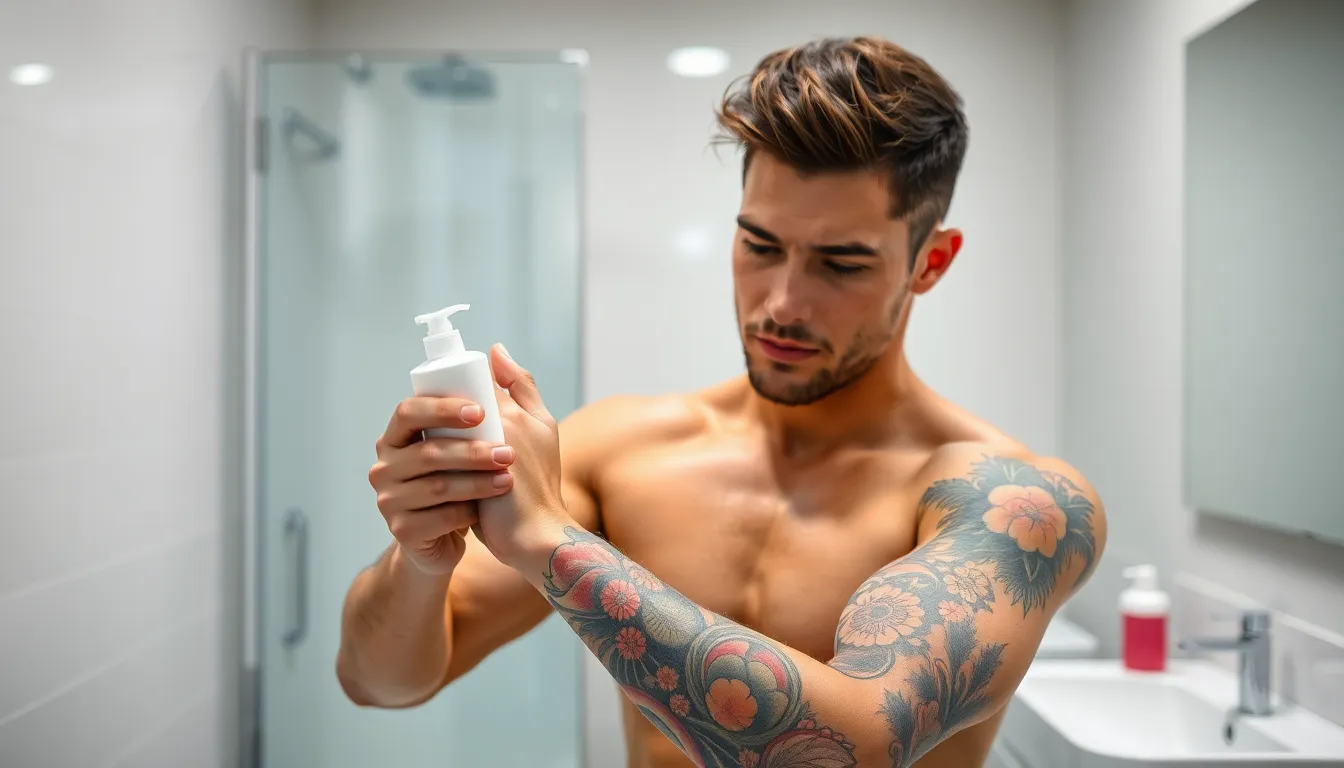
Proper aftercare ensures your Japanese forearm tattoo maintains its vibrant colors and intricate details for years to come. Following these essential care guidelines protects your investment in this meaningful cultural artwork.
Initial Healing Process Management
Protect the fresh tattoo immediately by keeping it bandaged for at least 4 to 6 hours after completion. We recommend leaving the protective covering on overnight to shield the artwork from bacteria and potential irritation during those crucial first hours.
Wash the tattooed area gently 2 to 3 times daily using lukewarm water and fragrance-free mild soap. This cleaning routine prevents infection while allowing the skin to breathe and heal naturally without harsh chemical interference.
Apply thin layers of fragrance-free lotion after each washing session to maintain proper hydration levels. We emphasize using minimal amounts to avoid clogging pores or causing skin irritation that could affect the healing process.
Avoid direct sunlight exposure during the first two weeks of healing to prevent premature fading of your Japanese tattoo’s bold colors. Swimming pools and strenuous workouts should also be eliminated from your routine during this critical healing period to prevent blurring and infection risks.
Long-Term Color Preservation Methods
Moisturize regularly to keep your skin healthy and your Japanese forearm tattoo vibrant over time. Consistent hydration maintains the skin’s elasticity and helps preserve the sharp details characteristic of traditional irezumi artwork.
Use sunscreen religiously whenever your tattoo is exposed to sunlight to prevent color fading and maintain the integrity of your cultural symbols. UV protection becomes especially important for preserving the vivid reds and blues commonly found in Japanese tattoo designs.
Practice gentle exfoliation once your tattoo has fully healed to maintain the sharpness of intricate details like scales on koi fish or petals on cherry blossoms. We recommend approaching this carefully to avoid damaging the delicate skin and artwork beneath.
Touch-Up and Maintenance Considerations
Schedule annual touch-ups to retain the intricate details and vivid colors that make Japanese tattoo art so distinctive. These periodic maintenance sessions help preserve elements like dragon scales, wave patterns, and samurai warrior details that define authentic irezumi style.
Follow personalized advice from your tattoo artist based on your exact skin type and the particular motifs in your Japanese forearm design. Different symbols and color combinations may require unique care approaches for optimal preservation.
Maintain consistent aftercare practices throughout the tattoo’s lifetime to preserve both the artistic beauty and symbolic significance of your chosen Japanese motifs. This dedication ensures your forearm tattoo remains a bold and meaningful expression of cultural appreciation for decades to come.
Conclusion
Japanese forearm tattoos represent more than just body art – they’re a powerful fusion of ancient tradition and personal expression. When we embrace these designs we’re connecting with centuries of cultural heritage while creating something uniquely our own.
The journey from selecting meaningful symbols to finding the right artist requires careful consideration and respect for the create. Whether we choose traditional irezumi or modern interpretations these tattoos become permanent reflections of our values and experiences.
With proper care and attention our Japanese forearm tattoos will continue to tell our stories for years to come. They serve as daily reminders of the strength courage and beauty we carry within ourselves.
Frequently Asked Questions
What makes Japanese forearm tattoos unique?
Japanese forearm tattoos combine traditional irezumi artistry with modern techniques, featuring cultural symbols like koi fish, dragons, and cherry blossoms. The forearm provides an ideal canvas for detailed designs that blend authentic Japanese heritage with contemporary self-expression, creating meaningful artwork that honors centuries-old traditions.
What are the most popular Japanese forearm tattoo designs?
The most respected designs include dragons symbolizing wisdom and strength, koi fish representing perseverance and courage, and samurai warriors embodying honor and loyalty. These motifs often incorporate traditional elements like wind, water, and seasonal flowers to create comprehensive storytelling through interconnected symbols.
How do modern Japanese tattoos differ from traditional ones?
Modern interpretations include neo-traditional styles with bold colors and dramatic impact, minimalist designs featuring refined symbols like sakura petals, and fusion tattoos combining traditional motifs with geometric patterns. These contemporary approaches honor Japanese culture while expressing individual artistic sensibilities and personal style.
What elements define authentic Japanese tattoo design?
Authentic Japanese tattoos feature wind and water background patterns, seasonal flowers like cherry blossoms, and traditional color palettes with bold black outlines and vibrant colors. Each element carries cultural significance, with colors and symbols working together to create meaningful designs that remain impactful over time.
Where should I place my Japanese forearm tattoo?
Popular placement options include full sleeve coverage for comprehensive storytelling, inner forearm vertical designs for discreet personal symbols, and outer forearm horizontal layouts for bold visual presence. The right placement enhances the tattoo’s narrative impact and showcases the dynamic nature of Japanese artistry.
What cultural meanings do Japanese tattoo symbols carry?
Japanese symbols serve as powerful talismans for protection and good fortune. Dragons represent inner power, koi fish symbolize perseverance, cherry blossoms capture life’s fleeting beauty, and demon figures like Raijin provide spiritual protection. These designs connect wearers to ancient traditions and personal transformation.
How do I choose the right artist for Japanese tattoos?
Research artists with irezumi expertise who understand cultural significance behind symbols. Assess portfolios for skilled line work, color harmony, and visual storytelling ability. Look for artists familiar with traditional techniques like tebori hand poking combined with modern methods to ensure authentic craftsmanship.
How should I care for my Japanese forearm tattoo?
Initial care includes keeping the tattoo bandaged, gentle washing, and moisturizing. Long-term maintenance requires regular moisturizing, sunscreen protection, and gentle exfoliation. Schedule annual touch-ups and follow your artist’s personalized advice to preserve vibrant colors and intricate details throughout the tattoo’s lifetime.
